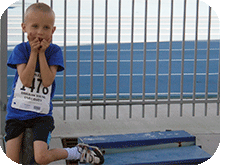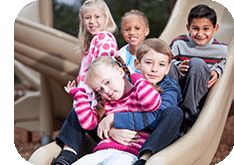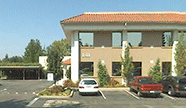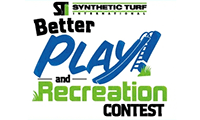Redefining Landscapes: Planning for the Autism Spectrum
Author: Chad Kennedy, Landscape Architect, ASLA
 In 2012 the Center for Disease Control reported that based on their surveillance, 1 of every 88 children in their sample groups were diagnosed with autism and development disabilities.1 At this level, autism diagnoses are common enough in society that it may be difficult to find someone who does not have a direct connection to or know someone who has been diagnosed with autism. I am no exception to this and know many people on the autism spectrum. I recently learned of an experience my young nephew (who is on the spectrum) had. At the time he was about five years old. Despite difficulties with autistic behaviors and physical limitations with his feet, he was excited about an opportunity to participate in a grade-school track and field event hosted by the local university's athletic program. With his understandably anxious parents looking on, he was visibly overwhelmed as he and the other children were herded to the running track start line. Though he struggled with the task of walking, when the gunshot indicated the beginning of the race, he invested all his energy and ran as fast as he could...in the wrong direction. With a little help from the volunteer athletes he was redirected and resumed the race. Side by side he ran with his volunteer athlete, watching as other children and classes passed them up. It took the two of them 20 minutes to finish the race but as he approached the finish line, thoughtful organizers turned on the facility's PA system (it hadn't been used until this point). After identifying my nephew by the number on his jersey, they announced in grand fashion his finish line crossing. The loudest applause of the day celebrated the efforts of a young boy who overcame physical, behavioral and environmental barriers. Though it was an amazing day and continues to be a cherished family memory, I can't help contemplating on the fact that if the planners of the event had known more about the autism spectrum, more children could have participated and enjoyed this event in the same way. With proper forethought planners of modern landscapes and built environments can not only minimize the boundaries placed on those with autism, but can promote inclusion. Below are a few concepts on how to accomplish this.
In 2012 the Center for Disease Control reported that based on their surveillance, 1 of every 88 children in their sample groups were diagnosed with autism and development disabilities.1 At this level, autism diagnoses are common enough in society that it may be difficult to find someone who does not have a direct connection to or know someone who has been diagnosed with autism. I am no exception to this and know many people on the autism spectrum. I recently learned of an experience my young nephew (who is on the spectrum) had. At the time he was about five years old. Despite difficulties with autistic behaviors and physical limitations with his feet, he was excited about an opportunity to participate in a grade-school track and field event hosted by the local university's athletic program. With his understandably anxious parents looking on, he was visibly overwhelmed as he and the other children were herded to the running track start line. Though he struggled with the task of walking, when the gunshot indicated the beginning of the race, he invested all his energy and ran as fast as he could...in the wrong direction. With a little help from the volunteer athletes he was redirected and resumed the race. Side by side he ran with his volunteer athlete, watching as other children and classes passed them up. It took the two of them 20 minutes to finish the race but as he approached the finish line, thoughtful organizers turned on the facility's PA system (it hadn't been used until this point). After identifying my nephew by the number on his jersey, they announced in grand fashion his finish line crossing. The loudest applause of the day celebrated the efforts of a young boy who overcame physical, behavioral and environmental barriers. Though it was an amazing day and continues to be a cherished family memory, I can't help contemplating on the fact that if the planners of the event had known more about the autism spectrum, more children could have participated and enjoyed this event in the same way. With proper forethought planners of modern landscapes and built environments can not only minimize the boundaries placed on those with autism, but can promote inclusion. Below are a few concepts on how to accomplish this.
Cognitive Planning: Children and adults on the autism spectrum, in general, have a difficult time interpreting their environment and the activities that are to occur in them, particularly in large areas. Planning for clear, easily understood and well maintained clues about the environment are a necessity. This includes boundaries, paths, areas of activity, and dangerous or hazardous areas. Incorporating wayfinding signage, visual supports and instructions, cues, color and texture demarcations, consistent directions and materials, and comfortably scaled movement corridors are a few ways of simplifying the cognitive environment.
Sensory Diets & Proprioceptive Planning: Sensory processing disorders are common with many on the spectrum. It is imperative that landscapes are planned to provide ample opportunity for self-regulation of sensory input. Sensory inputs include those of visual, auditory, olfactory, gustatory (taste), tactile, and the two less widely known proprioceptive and vestibular. Organizing the landscape's sensory features will assist individuals in determining and maintaining their own sensory diets. One person may need to feel the motions of swinging, rocking or jumping in order to stabilize their senses; others will need to retreat to a cozy space where they can feel more enclosed and secluded. Some individuals will be uncomfortable with leaning over or with activities that require the head's posture to be changed. The nature of the diversity of needs for those on the spectrum warrants the need for diversity in the landscape for activities, respite and sensory stimulation. If the landscapes sensory inputs are predictable, properly organized, structured and planned, many issues with over or under stimulation, stress, anxiety and behavior can be avoided.2,3
Graduating Difficulty: Unfortunately outdoor spaces intrinsically require certain levels of motor skills in order to navigate, experience and interact with them. When the required effort is more stringent than an individual can handle, self-inflicted isolation and frustration can occur. It is imperative to realize that natural tendencies in motor development are for individuals to progress at their own rate. Spaces should be planned for differing levels of difficulty and designed for graduated succession as each challenge is mastered. This holistic approach benefits mental, behavioral, social and physical health.

Cooperative Interaction: Individuals on the spectrum often have difficulty perceiving the environment and physical space communication. In order to avoid confusion, outdoor spaces can be planned to encourage collaboration and social interaction. A few methods for accomplishing this include:
- provisions for social interaction clues;
- visually structured spaces;
- avoidance of abstract ideas and elements;
- low requirements for physical effort;
- accommodations to encourage natural body positions; and
- the design of spaces to encourage eye contact.
3
These are just a few of the many concepts that can be implemented in our efforts to create modern landscapes which encourage not only their use by all of society's user groups, but social interaction between user groups within those spaces.
 In 2012 the Center for Disease Control reported that based on their surveillance, 1 of every 88 children in their sample groups were diagnosed with autism and development disabilities.1 At this level, autism diagnoses are common enough in society that it may be difficult to find someone who does not have a direct connection to or know someone who has been diagnosed with autism. I am no exception to this and know many people on the autism spectrum. I recently learned of an experience my young nephew (who is on the spectrum) had. At the time he was about five years old. Despite difficulties with autistic behaviors and physical limitations with his feet, he was excited about an opportunity to participate in a grade-school track and field event hosted by the local university's athletic program. With his understandably anxious parents looking on, he was visibly overwhelmed as he and the other children were herded to the running track start line. Though he struggled with the task of walking, when the gunshot indicated the beginning of the race, he invested all his energy and ran as fast as he could...in the wrong direction. With a little help from the volunteer athletes he was redirected and resumed the race. Side by side he ran with his volunteer athlete, watching as other children and classes passed them up. It took the two of them 20 minutes to finish the race but as he approached the finish line, thoughtful organizers turned on the facility's PA system (it hadn't been used until this point). After identifying my nephew by the number on his jersey, they announced in grand fashion his finish line crossing. The loudest applause of the day celebrated the efforts of a young boy who overcame physical, behavioral and environmental barriers. Though it was an amazing day and continues to be a cherished family memory, I can't help contemplating on the fact that if the planners of the event had known more about the autism spectrum, more children could have participated and enjoyed this event in the same way. With proper forethought planners of modern landscapes and built environments can not only minimize the boundaries placed on those with autism, but can promote inclusion. Below are a few concepts on how to accomplish this.
In 2012 the Center for Disease Control reported that based on their surveillance, 1 of every 88 children in their sample groups were diagnosed with autism and development disabilities.1 At this level, autism diagnoses are common enough in society that it may be difficult to find someone who does not have a direct connection to or know someone who has been diagnosed with autism. I am no exception to this and know many people on the autism spectrum. I recently learned of an experience my young nephew (who is on the spectrum) had. At the time he was about five years old. Despite difficulties with autistic behaviors and physical limitations with his feet, he was excited about an opportunity to participate in a grade-school track and field event hosted by the local university's athletic program. With his understandably anxious parents looking on, he was visibly overwhelmed as he and the other children were herded to the running track start line. Though he struggled with the task of walking, when the gunshot indicated the beginning of the race, he invested all his energy and ran as fast as he could...in the wrong direction. With a little help from the volunteer athletes he was redirected and resumed the race. Side by side he ran with his volunteer athlete, watching as other children and classes passed them up. It took the two of them 20 minutes to finish the race but as he approached the finish line, thoughtful organizers turned on the facility's PA system (it hadn't been used until this point). After identifying my nephew by the number on his jersey, they announced in grand fashion his finish line crossing. The loudest applause of the day celebrated the efforts of a young boy who overcame physical, behavioral and environmental barriers. Though it was an amazing day and continues to be a cherished family memory, I can't help contemplating on the fact that if the planners of the event had known more about the autism spectrum, more children could have participated and enjoyed this event in the same way. With proper forethought planners of modern landscapes and built environments can not only minimize the boundaries placed on those with autism, but can promote inclusion. Below are a few concepts on how to accomplish this. 

